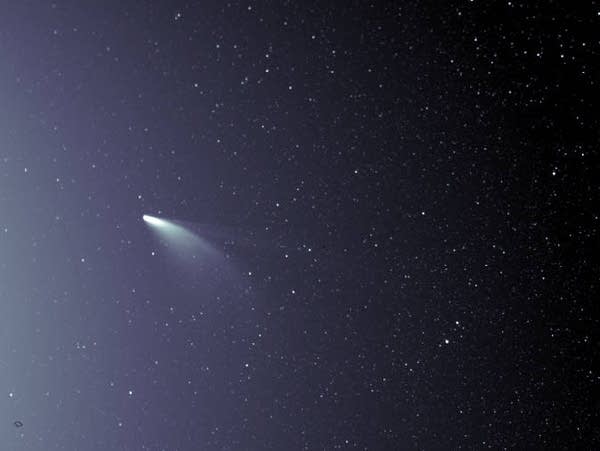Sky show: Perfect weather for seeing Comet Neowise this week
Clear skies, low humidity and no evening moon provide excellent viewing

An unprocessed image from the WISPR instrument on board NASA’s Parker Solar Probe shows Comet Neowise on July 5, shortly after its closest approach to the Sun. The Sun is out of frame to the left. The faint grid pattern near the center of the image is an artifact of the way the image is created. The small black structure near the lower left of the image is caused by a grain of dust resting on the imager’s lens.
NASA | Johns Hopkins APL | Naval Research Lab | Parker Solar Probe | Brendan Gallagher
Go Deeper.
Create an account or log in to save stories.
Like this?
Thanks for liking this story! We have added it to a list of your favorite stories.


